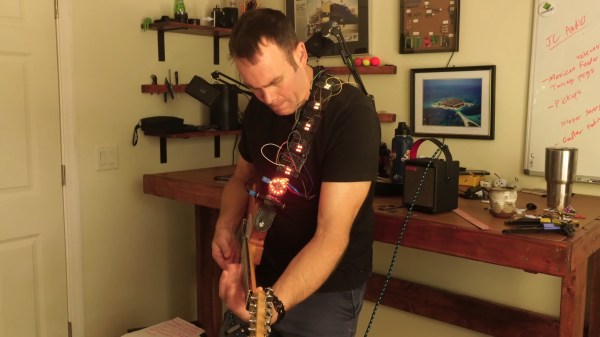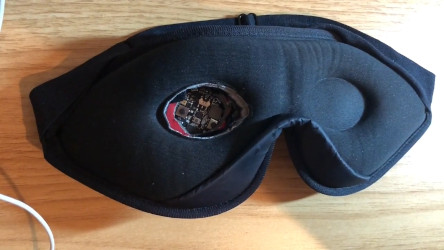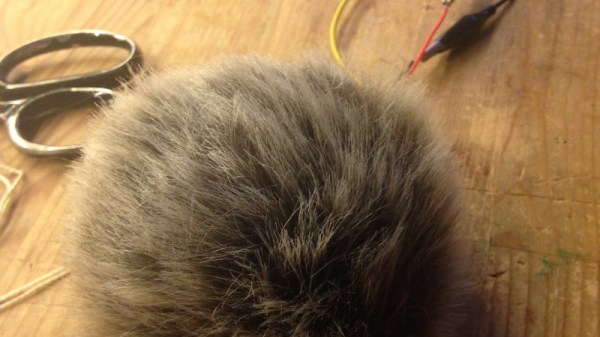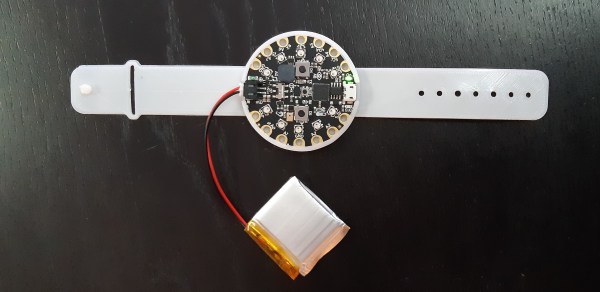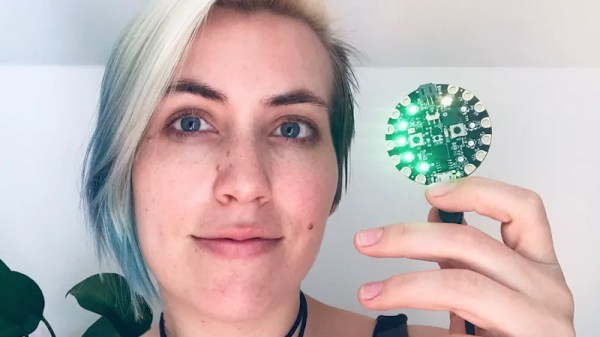Sometimes, whether we like it or not, ordering PCBs results in extra PCBs lying around, either because of board house minimums, mistakes on either end, or both. What’s to be done with these boards? If you’re Hackaday alum [Jeremy Cook], you make a sound-reactive, light-up guitar strap and rock out in cyberpunk style.
The PCBs in question were left over from [Jeremy]’s JC Pro Macro project, and each have four addressable RGB LEDs on board. These were easy enough to chain together with jumper wires, solder, and a decent amount of hot glue. Here’s a hot tip: you can use compressed air to rapidly cool hot glue if you turn the can upside down. Just don’t spray it on your fingers.
The brains of this operation is Adafruit Circuit Playground Express, which runs off of a lipstick battery and conveniently brings a microphone to the table. These two are united by a 3D print, which is hot-glued to the guitar strap along with all the boards. In the second video after the break, there’s a bonus easy-to-make version that uses an RGB LED strip in place of the repurposed PCBs. There’s no solder or even hot glue involved.
Want to really light up the night? Print yourself a sound-reactive LED guitar.
Continue reading “Cyberpunk Guitar Strap Lights Up With Repurposed PCBs”

